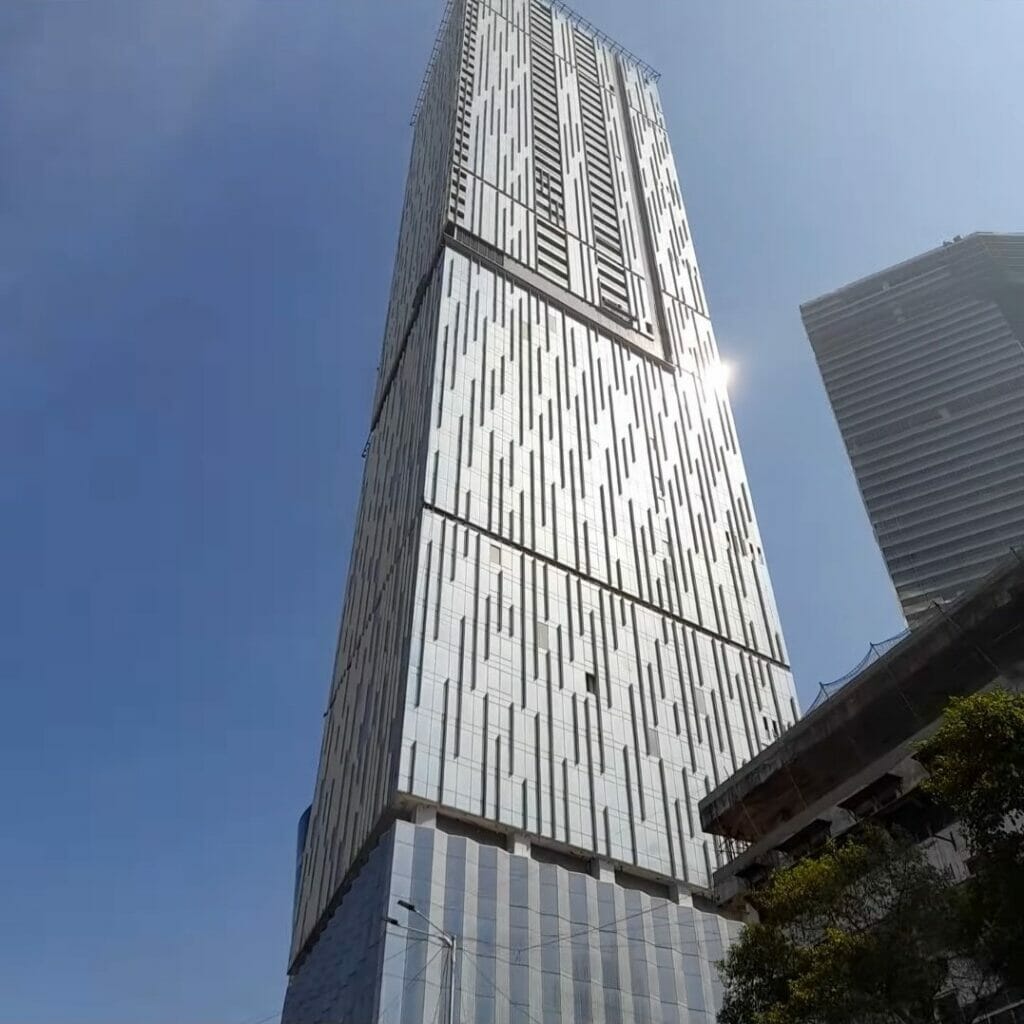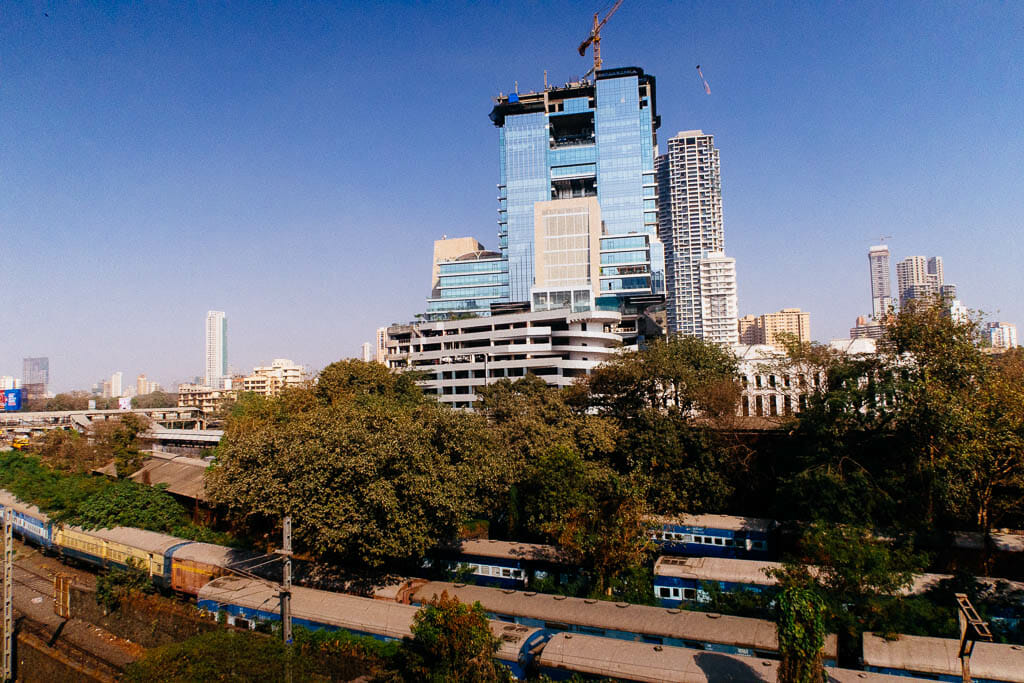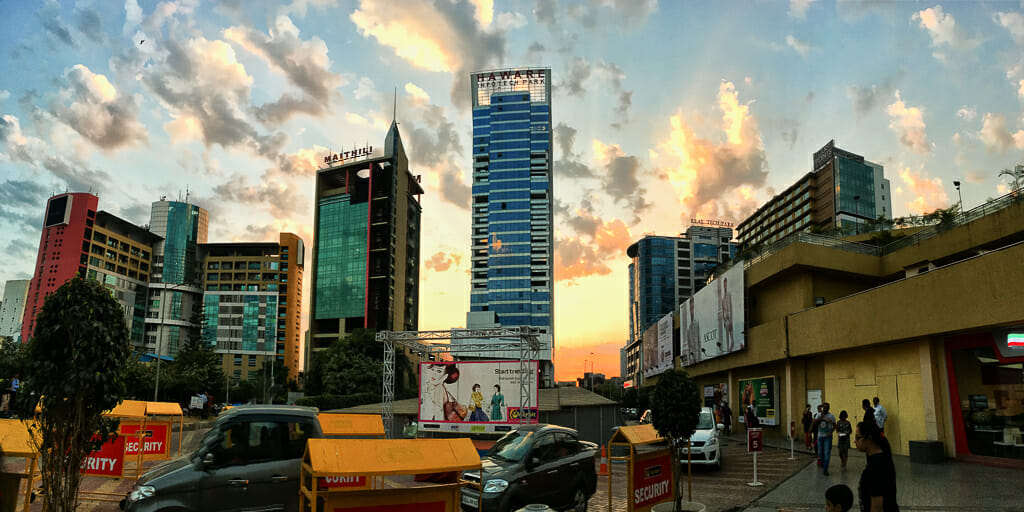A triplex penthouse in Malabar Hills, over 18,000 square feet, eight car parking spots, and a view of the Arabian Sea: all for the price of Rs 252.5 crore. A penthouse in Three Sixty West tower in Worli, 30,000 square feet, plus a terrace of 5,000 square feet and free sale land of 1.3 lakh square feet, 14 parking spaces: for the slightly lower price of Rs 230 crore.
These are outliers in Mumbai’s – and India’s – housing market, one dethroning the other for the spot of the most expensive property deal in the country. But due to the sheer size of their price tag, they make a splash.
This is what happened in February. The Maharashtra state government’s revenue collection from property registrations in Mumbai – comprising of minimum 5% stamp duty and Rs 30,000 registration fees – hit a five-year high at Rs 1,102 crore. Compared to February 2022, the number of properties registered was 8% lower, but revenue collection, 80% higher.
What changed between the two months was the cost of the properties; the average cost of the houses bought last month was Rs 1.9 crore.

The immediate reason
The immediate reason for this sky-high sale of luxury housing in Mumbai, agreed upon unanimously by experts, is the Union Budget, presented in February. The budget put a ceiling on capital gains – from the sale of assets or investments – that can be exempted from tax at Rs 10 crore.
As it stands now, any capital gains from the appreciation in property prices are taxed at 20% (if the property was held for under two years, when it is considered a short-term capital gain, it is taxed as per the individual’s income tax slab rate). Unless, the gains are reinvested in another property within two years – then, it forgoes tax. The new rule in this year’s budget capped this no-tax amount – effective April 1st.
“To save tax on capital gains,” says Anuj Puri, chairman of Anarock Property Consultants, a leading real estate consultancy, “High network individuals across top cities including Mumbai are rushing in to close luxury housing deals before the financial year ends in March.”
“Luxury housing is driven by the demand to upgrade,” says Pankaj Kapoor, the managing director of a real estate research firm, Liases Foras. “People sell their house to buy another, and they always adjust their capital gains against the new purchase.”
What is luxury housing?
While the first instinct to characterise housing is based on the price tag, definitions are not so square. The cost of a luxury house in a prime location like South Mumbai or Juhu would fetch an ultra-luxury house in Borivali.
“Earlier, the key factor defining a luxury home was its location. Homes in prime localities or city centres were largely considered a luxury. Today, there is a slight change in trend with several luxury homes now finding their way to the city peripheries as well. More than the location, the sizes and the state-of-art amenities provided by developers in these projects give them the luxury tag,” says Anuj.
Anarock considers any house priced above Rs 1.5 crore as a luxury. Pankaj Kapoor, an urban planner defines houses falling between Rs 2 to 3 crore as semi-luxury, above that as luxury, and above Rs 10 crore as ultra-luxury. Knight Frank India, another real estate consultancy, classifies properties costing over Rs 10 crore as luxury housing.
The larger trend
If we zoom back a little, it is clear that the trend in luxury housing in Mumbai is not limited to this month and the last. Revenue collection from property sales in Mumbai for the whole of 2022 was Rs 8,800 crore: a 10-year high. Of the 1.21 lakh properties sold, 30% belonged to the luxury segment, up from 13% in 2019.
“The real estate market has shown great performance,” says Gulam Zia, the senior executive director of Knight Frank India, a real estate consultancy. “While the recent budget intervention is one of the reasons, there is also pent-up demand.” This is repeated by Pankaj Joshi, urban planner and principal director at Urban Centre, Mumbai.
Gulam explains that for the previous six to seven years, the luxury housing sector had not done so well. The wealth that was created did not reflect in the housing market. This was accompanied by largely stagnant house prices, adds Kapoor. Then came COVID-19.
“Inventory was languishing,” says Kapoor. “Covid triggered fear among the builders holding on to the stock, so they gave good discounts in the luxury segment.” A cut in stamp duty costs between September 2020 and March 2021 also helped.

Supply-side
There is also the added undeniable fact that the people in the league for a luxury house were the least economically impacted by the pandemic, says Anuj. “Buoyed by this demand, developers have also increased their new supply in this category.” Approvals for new housing projects were five times higher than normal in 2021.
COVID-19 helped here too.
To encourage the real estate sector during the economic slump brought in by the pandemic, the state government sweetened the deal for many developers and builders. For the entirety of 2021, it offered a 50% discount on premiums; a portion almost a third of the project’s cost, which the builders pay for extra floor space index (FSI), open space, staircases, elevators, etc.
The fruits of this discount are expected to come reaping in by 2025, delivering an average 50,000 new houses to the city every year instead of the usual 20,000. The increased supply may work to reduce house prices, not restricted to the luxury segment. But in an industry that marches on market trends, the demand for luxury housing in Mumbai has been noted.
Read more: Interview: How Floor Space Index, or FSI, affects housing in Mumbai
Profit margins in luxury housing
The market – demand and supply – is what dictates prices and profits.
And while the entry-level barriers for luxury housing are high, its rewards – profit margins – are higher. “In a luxury home, the margin would be at least 25-30% or more. But in the case of affordable homes, it is wafer-thin. More so, because both land and construction cost has become costly for the developers,” says Anuj.
Gulam is of the opinion that the markets reign supreme. “Market factors will decide what is profitable. If you create luxury housing in a location where the demand is for mid to low-end housing, you will not find many buyers,” he says.

Future expectations
Yet the fact that there has been no substantial crash in Mumbai’s house prices, even during COVID-19, perturbs Joshi. “A substantial number of properties are kept in a loop by investors,” he says. “They’ve parked a lot of money in them, so they’re not willing to sell unless they’re getting good appreciation, they hold and wait.” This keeps stock low and prices raised.
Limited land, a long and expensive approval process for building all lead to the high land prices. “Mumbai has largely become gentrified. Either you have slums or slum-like housing or luxury housing. There’s no in-between,” says Joshi.
The only little affordable housing that has survived is due to government interventions, unlike luxury housing, which is entirely market driven. “Several incentives have managed to attract several homebuyers and developers to both buy and build respectively in the affordable segment,” says Anuj. But the performance of this segment gives an indication at what expense growth in the luxury housing segment has come at. “If not for Covid, which severely impacted the affordable buyers economically, the segment would have remained top in demand and supply even now.”
Luxury housing vs urban planning
In a city like Mumbai where approximately half of the population lives in slums, luxury housing presents a wildly contrasting unreality. “Compared to the density in low to middle-income housing, few people live in luxury housing. But their strain on municipal and ecological resources is very high,” says Joshi.
They are energy-intensive, often having central cooling, private lifts, multiple cars, etc. Likewise, their water consumption is disproportionately high. All of this burdens the pre-existing energy and water grids, particularly in older areas, and deprives others of these basic rights and services. It does this on a long-term and large-scale too, by their larger carbon footprint and consequently destructive environmental impact.
“Slums cater to the richer half by being negative in their energy consumption. That’s how we’re able to sustain such high densities in Mumbai,” he adds. In this way, luxury housing is both dependent on slums and responsible for perpetuating them.
Urban planning can minimise this impact, says Joshi, by first ensuring such an unequal equation does not exist. It can also disincentivise luxury housing by making them pay – proportionately, at telescopic rates – for the resources consumed in real time and the environmental impact they have.
This article is part of a series of articles on Urban Planning in Mumbai, supported by a grant from the A.T.E. Chandra Foundation.